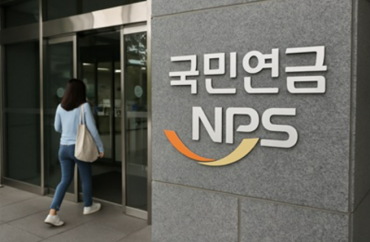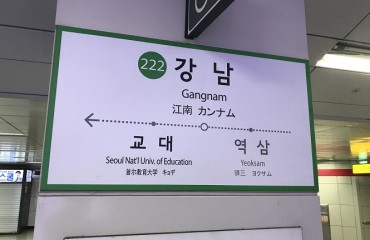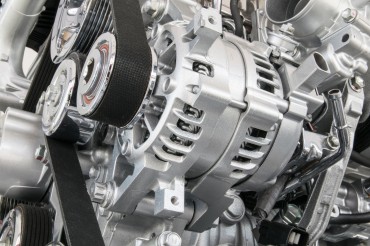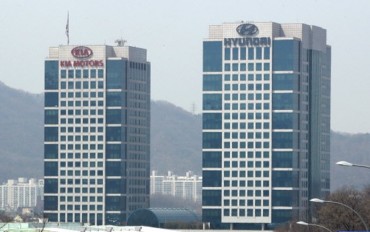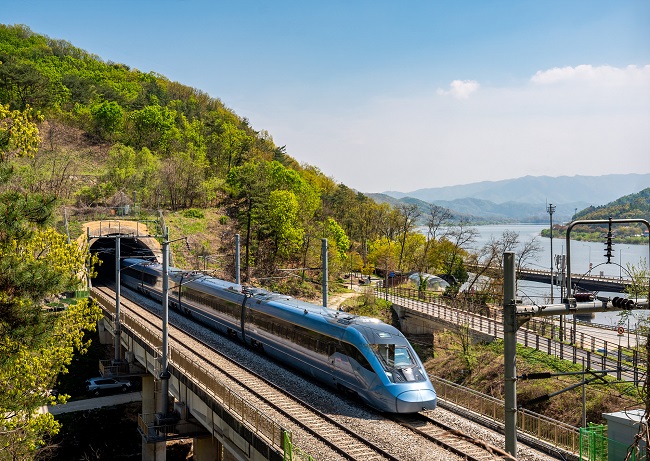
This file photo provided by the transport ministry shows the country’s sole KTX-Eum bullet train on the Seoul-Gangneung route.
SEOUL, Nov. 4 (Korea Bizwire) — South Korea aims to replace most of its diesel-powered train cars with electric ones by 2030 as part of its broad carbon neutrality push.
The country has 15,732 train cars that include 358 diesel ones.
Out of the diesel rail cars, the country plans to initially replace 162 rail cars with electric ones by 2030, according to the Ministry of Land, Infrastructure and Transport.
The government will maintain 196 diesel rail cars until 2030 for emergency use and then switch to hydrogen fuel cell electric ones by 2050.
It will also shift the 162 electric train cars into hydrogen ones by 2050, Yoon Sang-won, deputy director at the ministry’s railway policy division, said in a recent briefing.
“Power supply from the overhead catenary system (OCS) for electric rail cars won’t be possible during a war. So the essential 196 diesel train cars need to be kept because they have to carry military vehicles,” the official said.
Hydrogen train cars can carry military vehicles without electricity from a catenary system. Hydrogen fuel tanks will allow them to carry military cars, he added.
The electrification push is in line with the government’s plans to transform the country’s fossil-fuel reliant economy into an eco-friendly one in the long term.
It aims to cut greenhouse gas emissions by 40 percent from the 2018 levels by 2030 and go carbon neutral, or effectively reduce carbon emissions to zero, by 2050.
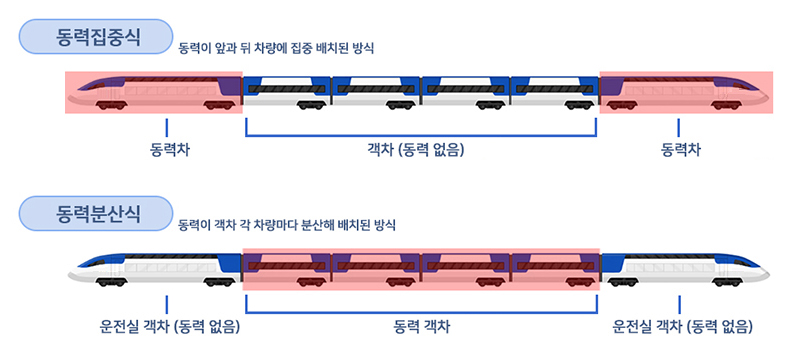
This file photo provided by Hyundai Rotem shows the power-concentrated KTX high-speed train (above) and the power-distributed KTX Eum train.
In related efforts, the government said it will invest 92.1 trillion won (US$78 billion) to expand the nation’s railway systems for 10 years through 2030 to carry more passengers and cargo.
“Given train cars emit much less greenhouse gas emissions than diesel trucks on the roads, the government needs to sharply increase the volume of cargo deliveries using the railway systems,” said Kim Do-han, deputy director of the ministry’s railway operation division.
If cargo deliveries through the railway systems rise to 80 million tons in 2050 from 26 million tons in 2020 after the expansion, the country’s carbon emissions are expected to decline by 3.5 million tons a year.
Moreover, Korea began operating the KTX Eum high-speed train developed on its own technology this year to serve more passengers compared with the existing KTX built on France’s TGV technology.
“The power-concentrated KTX has power-processing systems in the cars located at both ends of the train. But the power-distributed KTX Eum has such systems underneath the train so it has more space for passengers,” Kim said.
It is safe to say the KTX Eum is more effective and environment-friendly compared with the KTX in terms of electricity consumption as the former can carry more people than the latter, he added.
(Yonhap)



